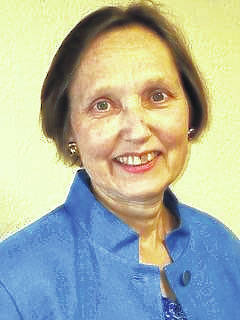
“What is this life if, full of care, We have no time to stand and stare.”
— “Leisure” by W. H. Davies
He was born during uncertain times; the country was in the midst of a civil war. He lost his father before he was even born. He lost his mother at the age of three, when she remarried and moved out, leaving him with his grandmother. Not surprisingly, he learned to lose himself – in an intense focus on trying to figure out how things worked.
When his mind was whirring to connect-the-dots and discover a pattern, he could forget everything else, even to eat or sleep. His unshakeable belief that there was an underlying pattern, an essential orderliness in the natural world, was an early inheritance from his devout mother. He searched for it everywhere.
Despite his poverty, he was given a rich classical education, thanks to the generous hearts of two uncles. When the time came for university, he was able to win a place at one of the best in the country. Unlike the more privileged students, though, he had to earn his keep. He became a part-time servant to one of the professors, a job which kept him literally running from one part of the campus to another. For meals, he had to make do with whatever was left after the others had finished.
It was not until the year that the university closed down and sent everyone home due to health concerns, that he had the leisure for deeper thinking. He found himself back at the family farm, once more occupied by his mother, widowed again. Retreating to the apple orchard, the house now being alive with step-siblings, he spent many quiet hours letting his thoughts and theories ripen slowly, along with the apples.
“Chance favors the prepared mind,” observed Pasteur, who had his own break-through moment when he identified germs as the cause of disease and infection. Unquestioned today, the Germ Theory of Disease was contrary to the “settled science” of his day, and violently resisted by establishment thinkers, a fate that many of Newton’s advances would also suffer.
But back to the apple orchard, and the incubating revolution there. Whatever direction Isaac Newton’s thoughts were taking him, in the background was the occasional thunk of an apple that had lost its grip and accelerated to the ground. (In some versions of this story, an apple actually makes contact with his skull on the way down.) Be that as it may, he was often still there as the daylight dimmed, and the moon brightened in the sky. Tracing its great arc across the heavens, young Newton could not help marveling at how, night after night, it followed a predictable curved path. What kept it turning towards the earth? This was not a question that establishment theorists asked.
According to the “settled science” of Newton’s day, heavenly bodies operated in the realm of perfection. They were never changing, perfectly polished spheres following perfectly circular orbits. Moving in circles was part of their nature. They were outside the reach of any earthly corrupting influences. The earth’s surface, on the other hand, was clearly subject to disturbances of all kinds – earthquakes, volcanoes, ocean tides, storms, and more. And earth-based movements, such as falling apples, occurred in straight lines, rather than in the circular motion of eternal perfection.
It took a brave and independent mind to consider any overlap between these two realms. Aiming to “think God’s thoughts after him,” Newton paid little regard to the traditions of mere mortals. With the leisure to absorb the quiet rhythms of the natural world, an astonishing connection began to form in his mind. Could it be possible that the force behind the falling apples, and the force behind the orbiting moon were one and the same? In Italy, he could have been burned at the stake for suggesting such heresy, a fate narrowly escaped by Galileo, whose telescopes showed the weathered surface of the moon and other desecrations of the heavens. Fortunately, Newton was in England.
Although it would take a more accurate value for the radius of the earth, before his calculations would match the observed motion of the moon, Newton’s insight into the unity of the forces involved was correct. The earth and the moon did share the same law of gravity, shattering the established paradigm of Aristotle and his followers. Newton’s unrelenting search for order and pattern, in our world and beyond, had been astonishingly rewarded.
A little holiday boredom, some time to “stand and stare,” could be just the opportunity to engage that natural sense of wonder. To provide further inspiration, Delaware’s Fundamentals bookshop offers the curious child Who is Isaac Newton?, one of an excellent series. For those slightly older or more ambitious, online versions of Newton’s original notebooks and writings, with detailed drawings and diagrams, are available free from The Newton Project. Yes, really! Have a look, you will be amazed.


